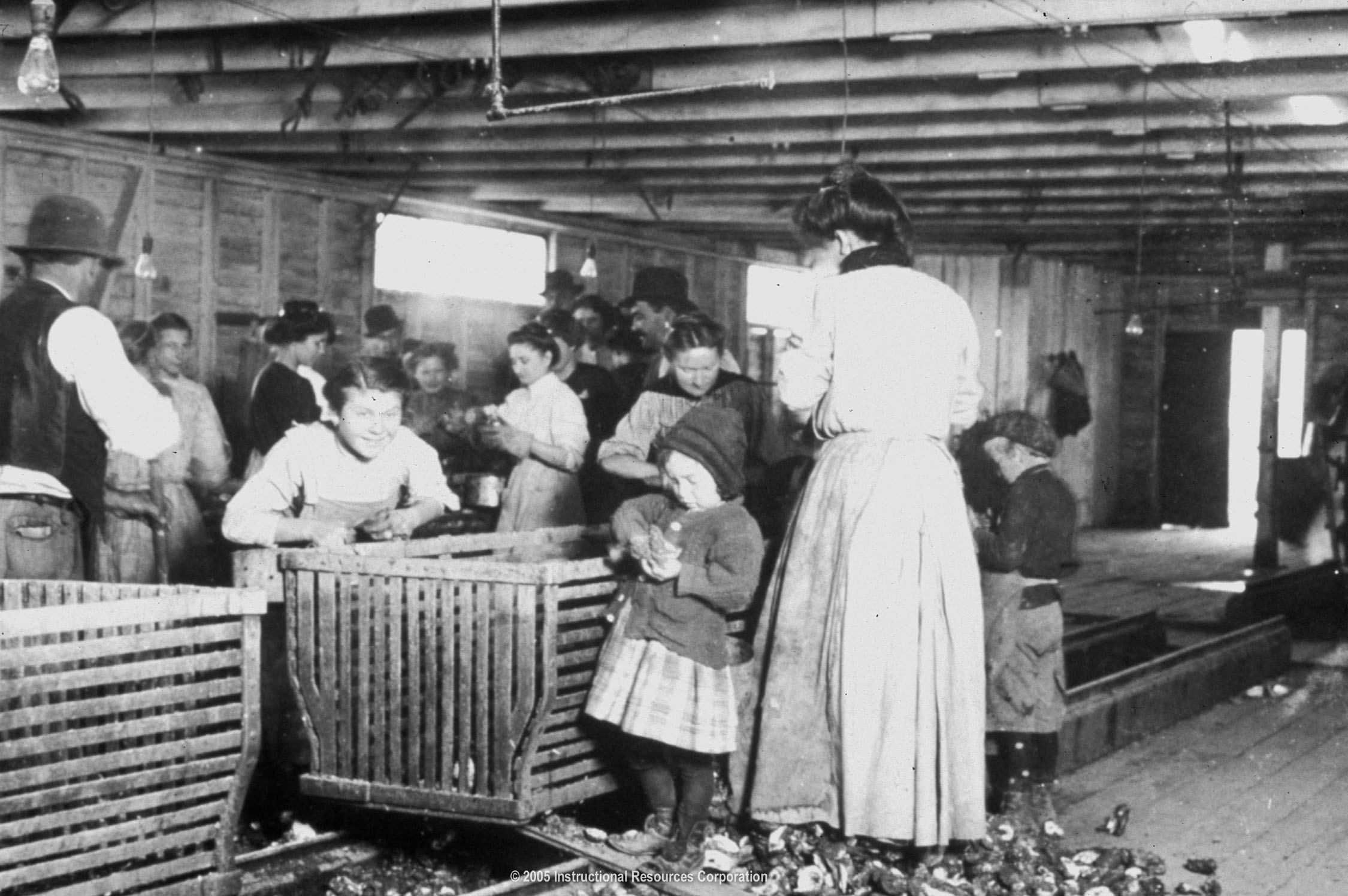Introduction
Central Question: Did the rise of industry create opportunity or limitations for the American people?
Do you have a part-time job? Many teenagers today work to earn extra money while they are still in high school. If you have a job, you know there are laws that restrict how many hours you are permitted to work and how late you are allowed to work on school nights. Even the adults in your family are protected by laws that regulate safety conditions and working hours.
Analyze the photographs below. What do you notice about the workers? Select each image icon to see a larger version.
| Tipple Crew at Turkey Knob Mine in MacDonald, West Virginia | |||
 |
|
||
 |
|||
 |
|||
| Hine, Lewis Wickes, photographer. Tipple Crew, see photo #146 Turkey Knob Mine, Macdonald, W. Va. Oct. 1908. Photo by Lewis W. Hine, October, 1908. Image. Retrieved from the Library of Congress,. <https://www.loc.gov/item/ncl2004000173/PP>. | |||
| Oyster Factory in Dunbar, Louisiana | |||
 |
|
||
 |
|||
 |
|||
| 4-year-old Mary,.shucks oysters. IRC, 2005.Image.
Discovery Education. Web. 5 May 2016. <http://www.discoveryeducation.com/>. |
|||
While Rockefeller, Morgan, and Carnegie made fortunes off the rise of industry in the 19th century, most Americans struggled to survive. The typical factory employee of the period worked 10+ hour days for a meager $1.55 a day. Job stability was unheard of as pregnant, injured, or slower workers were often fired without explanation and certainly without compensation or benefits.
Eventually the workers realized that change was needed. They began to organize and found that when united, there was strength in their numbers. Strikes, boycotts, and rallies were held, but often without much success. Though the change was limited in the late 1800s, the seeds for reform were planted and would continue to grow during the next century.
Following successful completion of this lesson, students will be able to:
- Describe the effects of American industrialization during the late 19th century.
- Identify the typical conditions experienced by laborers during the Second Industrial Revolution.
- Discuss the formation of early labor unions and the strategies used to effect change.
The above objectives correspond with the Alabama Course of Study: US History 11 Objectives: 1 & 1.5.
This lesson incorporates the following Literacy Standards: R2, R3, W1, W4, W6 & W9.